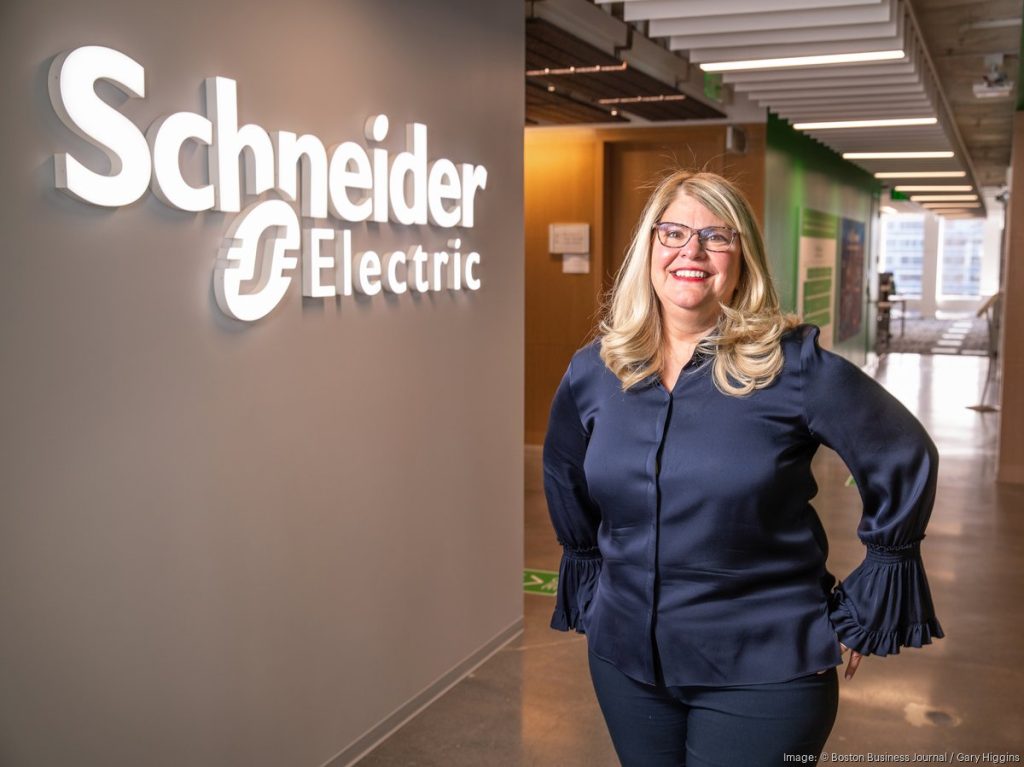September 16, 2024
“CIOs understand that sustainability is here to stay, it’s no longer just a buzzword,” clarified Alison Matte, rubber-stamping a leading corporate objective irrespective of company or country.
In permeating the priority lists of boardrooms across the world, sustainability has seemingly passed the why test with flying colours. The market understands and acknowledges the importance of action – whether individually or collectively.
“We can all agree on that,” said Matte, speaking as Sustainability Lead of EcoStruxure IT at Schneider Electric.
“Government regulations are coming into force and certifications are becoming requirements for companies. Plus, the perception point of view whether that be from consumers and shareholders is important. So yes, sustainability is here to stay.”

The key focus area – and by extension ongoing challenge – facing CIOs today from an environmental, social and governance (ESG) perspective is centred around who in the organisation reports what? And how granular can and must the reporting be?
“Committing to ESG is a positive step and most companies have policies and KPIs in place already which is encouraging,” Matte added. “But how granular can they go as a company?
“Where the CIO comes into play is around IT infrastructure. Very few companies don’t have IT infrastructure or IT assets in some form. For example, if you’re using emails or phones then you’re managing data and that data needs to be managed and computed somewhere – usually in local or distributed data centres.”
By 2027 – and according to Gartner – 80% of CIOs will have performance metrics tied to the sustainability of the IT organisation. For 25%, compensation will also be directly tied to the impact of sustainable technology.
“Whether owned or outsourced, at the end of the day, CIOs must know the IT footprint of their organisation,” Matte advised.
But this fundamental need isn’t entirely playing out in the numbers. Globally, less than half of executives (43%) are currently aware of their organisation’s IT footprint.
According to Capgemini findings, the level of awareness varies by sector – banking and consumer products show relatively higher levels of awareness, while industrial manufacturing displays the lowest level of awareness.
“That is low,” Matte assessed. “But it’s also a sign of change. If that question was asked five years ago, the number would have been lower. And if we ask it tomorrow, it most likely would increase.”
Delving deeper into the research, 50% of businesses have an enterprise-wide sustainability strategy but only 18% have a “comprehensive” sustainable IT strategy with well-defined goals and target timelines.
“CIOs are playing a role,” Matte added. “Yes, a cost exists but how can they break that down and how is that relevant to the sustainability KPIs of the company? These are the questions that companies and countries are starting to ask.”
Within the context of rising electricity demand and distributed IT environments changing the market landscape, Matte observed a dual role emerging for CIOs specific to sustainability.
Firstly, in the use of technology and analytics to help cut emissions by reducing, replacing and reusing IT infrastructure. Secondly, through the level of sustainability achieved with internal IT environments.
Citing the work of Elizabeth Hackenson – CIO at Schneider Electric – Matte outlined the importance of IT executives segmenting the task of sustainability into three core areas:
“There’s many factors in place,” Matte explained. “If we look at sustainability as a whole, there’s many stakeholders who have to report metrics and start monitoring. In the enterprise, many teams can exist and data isn’t always stored in one place.”
With multiple divisions tackling the issue, a reorganisational shift is required to ensure that information and data flows correctly to allow the company to first strategise, and then decarbonise.
“That’s why we put digitise in the middle,” Matte said.
“Sometimes a mismatch occurs with the strategise piece – companies have great commitments, want to do better and know what they need to do. They understand that decarbonising is the step to take but they lack the intermediate step of the next specific action to take.”
If organisations can digitise through software and solutions, Matte said the management and visualisation of data can be significantly enhanced in parallel. The aim is to improve visibility on where the data is originating but also the required methodology to better calculate reporting metrics.
“If you can understand that and use digital tools to create a baseline, then you can accelerate that and show progress,” Matte recommended.
Regardless of maturity, a positive introductory step for organisations is to simply ask: how can we become more sustainable? The next step is to break it down into bite-sized milestones.
“You can’t do everything at once, it’s impossible and takes time to transform,” Matte added.
“Businesses may have some elements set in place or they may not so it’s important to build in a little grace. A logical initial priority is to look at the regulations and assess what you actually have to do now.”

Executing a sustainable IT infrastructure strategy
Despite best intentions however, implementation challenges preventing the deployment of wide-scale sustainable IT centre around four common roadblocks for CIOs. Based on Capgemini findings, they rank as:
“Cost is a valid reason but it can be quite intimidating sometimes,” acknowledged Matte, referencing the importance of return on investment (ROI) in sustainability.
For Matte, businesses are chiefly committed to IT infrastructure being secure, resilient and sustainable. Security ranks first as the baseline because any connected asset must first be protected, before becoming resilient and then sustainable.
“Trade-off tools help conceptualise ideas and one tool that we have is an ROI calculator,” Matte expanded. “The aim is to bridge the gap between all three because how much do organisations value cyber security?
“And how much do they value resiliency? Unfortunately, no country is immune to natural disasters. Then sustainability, what price do you put on that? An ROI calculator can also show other benefits from the implementation of new technologies.”
In a direct address to CIOs, Matte directed executive attention to a three-step framework designed to measure and track IT energy consumption across the entire enterprise IT portfolio.
The recommendation is to start small by focusing on power usage effectiveness (PUE) and then build up the metrics monitored following a comprehensive IT infrastructure audit.
“Start by measuring one metric,” Matte said. “For example, if you’re an IT manager, demonstrate how you can reduce the company’s electricity bill by X amount because of optimisation and recommendations via software. That will transfer into ROI quite fast.”
Then focus can shift into measuring other key metrics within the organisation, underpinned by offerings such as EcoStruxure IT.
The DCIM software enables owners and operators to measure and report data centre performance based on historical data and trends analysis, combined with artificial intelligence (AI) and real-time monitoring.
Supported by a new download function, organisations can now quantify and report at speed to remove “laborious manual tasks” while improving the ability to “harness the power of data”.
“When seeking to reduce IT and data centre energy consumption and CO2 emissions, organisations must establish a fact-based baseline, and access to real-time and historical data is vital,” Hackenson added.
“Through the use of EcoStruxure IT, we have continued to make significant progress in our mission to reduce our IT energy consumption and environmental impact, and to help the company progress its sustainability objectives.”
Aligned to the vendor’s sustainability commitments – publicly shared via Schneider Sustainability Impact (SSIs) in 2021 – Hackenson kick-started a Green IT program to identify “new and intelligent” decarbonisation pathways to achieve at least a 5% annual IT emissions reduction.
As part of the program, Schneider Electric utilised its EcoStruxure IT software, which was deployed across more than 140 key sites globally to improve resiliency and security of its IT operations.
By utilising the insights gathered from the software, the vendor was able to witness a 30% energy consumption reduction in H2 ’23 versus H1 ’23 in its smart factory located in Lexington, Kentucky (USA).
“We focused on making this available across the globe, for customers running on-premises and cloud environments,” Matte added. “The aim was to make this an out-of-the-box offering which includes sustainability dashboard capabilities.”
Also available via the channel partner ecosystem to either resell or manage on behalf of end-users, the new version of EcoStruxure IT is anchored in an ability to automate and model data based on PUE reporting.
Through DCIM 3.0, the solution is positioned as a “critical part” of Schneider Electric’s overall sustainability tool set, connecting IT to an enterprise-wide sustainability dashboard and software platform.
“We’re always learning from the usage of our software and are continually trying to make the experience better for customers and partners,” Matte added. “We are committed to making this as channel-friendly as possible.”
As more companies prepare for upcoming regulations – which mandates the reporting of IT and data centre energy consumption – Matte said the significance of accessing real-time, primary data becomes even more critical.
Through the launch of the new AI-driven dashboard and reporting capabilities in EcoStruxure IT across international regions, customers can quickly leverage data to comply with the new regulatory requirements.
“AI has two impacts on sustainability,” Matte added. “There’s an impact on the environment caused by AI but there’s also the impact of using AI to be more sustainable. How can we find the right balance between both?”
Inform your opinion with executive guidance, in-depth analysis and business commentary.